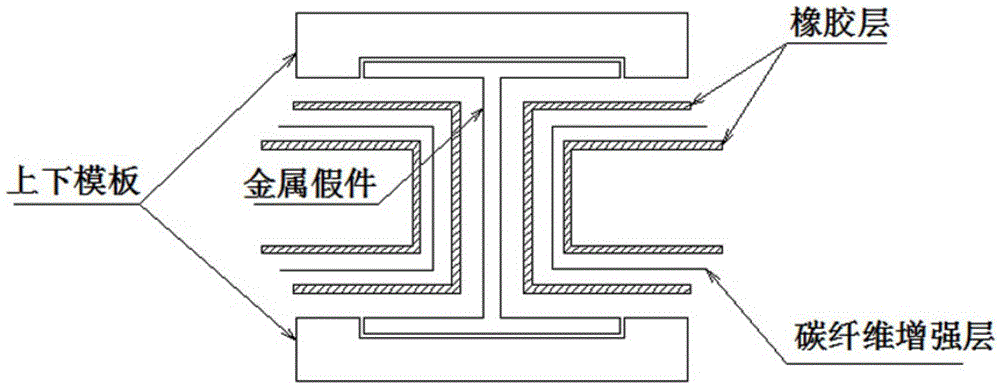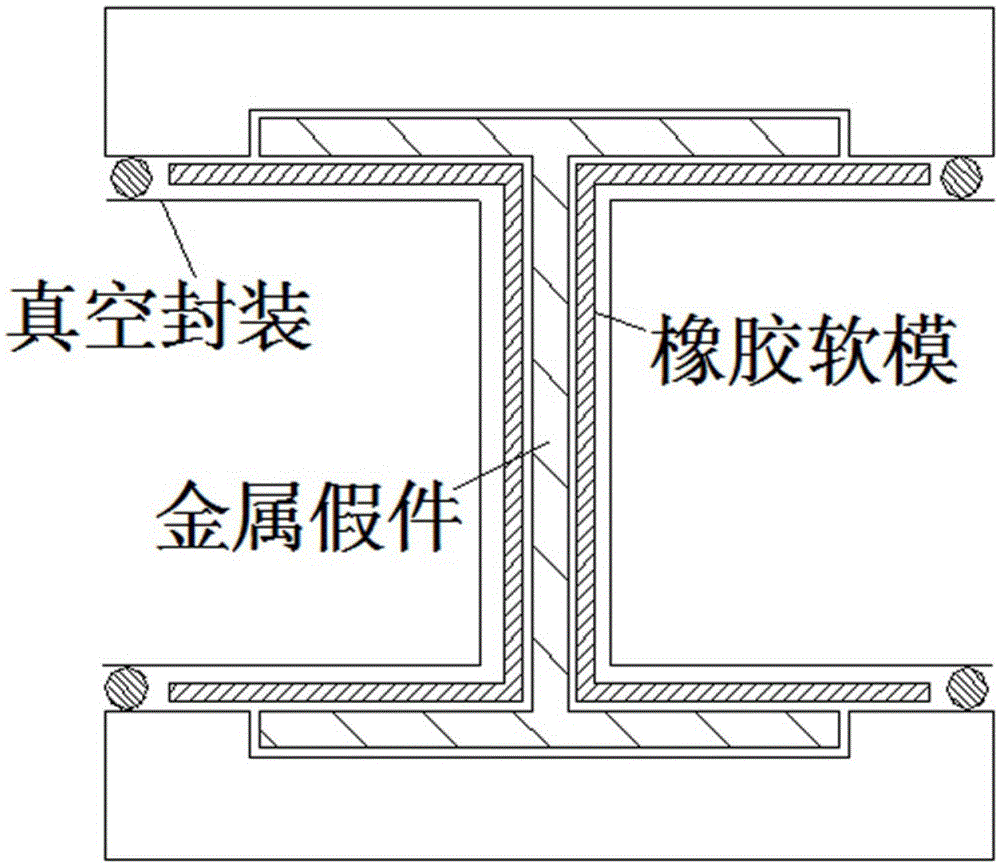Method for using open-type rubber soft die for realization of thin-wall I-beam structure composite material part
A composite material and I-beam technology, applied in the field of composite material manufacturing, can solve problems such as high manufacturing and maintenance costs of metal core molds, excessive thickness of thin-walled composite parts, and reduced service life and reliability of airbags, etc., to achieve Long service life, avoid thermal hysteresis effect, avoid the effect of uneven pressure
- Summary
- Abstract
- Description
- Claims
- Application Information
AI Technical Summary
Problems solved by technology
Method used
Image
Examples
Embodiment Construction
[0024] The present invention will be further described below in conjunction with the accompanying drawings and specific embodiments.
[0025] The open rubber soft mold made of fiber-reinforced rubber is formed by the metal mold. After the rubber soft mold is formed, it will be used as a part of the forming mold to complete the molding process of the composite material part. The detailed process is as follows:
[0026] Through the method of mechanical manufacturing, process a metal dummy that is completely consistent with the outer dimensions of the composite material, and a soft rubber mold with a baffle. There is a cooperative relationship between the parts of the mold, and the clamping of the upper and lower templates The groove will play a certain role in limiting the metal dummy (such as figure 1 shown).
[0027] Use the cavity formed by the metal dummy and the upper and lower baffles to pave the rubber soft mold. The rubber soft mold uses rubber as the main material, a...
PUM
 Login to View More
Login to View More Abstract
Description
Claims
Application Information
 Login to View More
Login to View More - R&D
- Intellectual Property
- Life Sciences
- Materials
- Tech Scout
- Unparalleled Data Quality
- Higher Quality Content
- 60% Fewer Hallucinations
Browse by: Latest US Patents, China's latest patents, Technical Efficacy Thesaurus, Application Domain, Technology Topic, Popular Technical Reports.
© 2025 PatSnap. All rights reserved.Legal|Privacy policy|Modern Slavery Act Transparency Statement|Sitemap|About US| Contact US: help@patsnap.com



